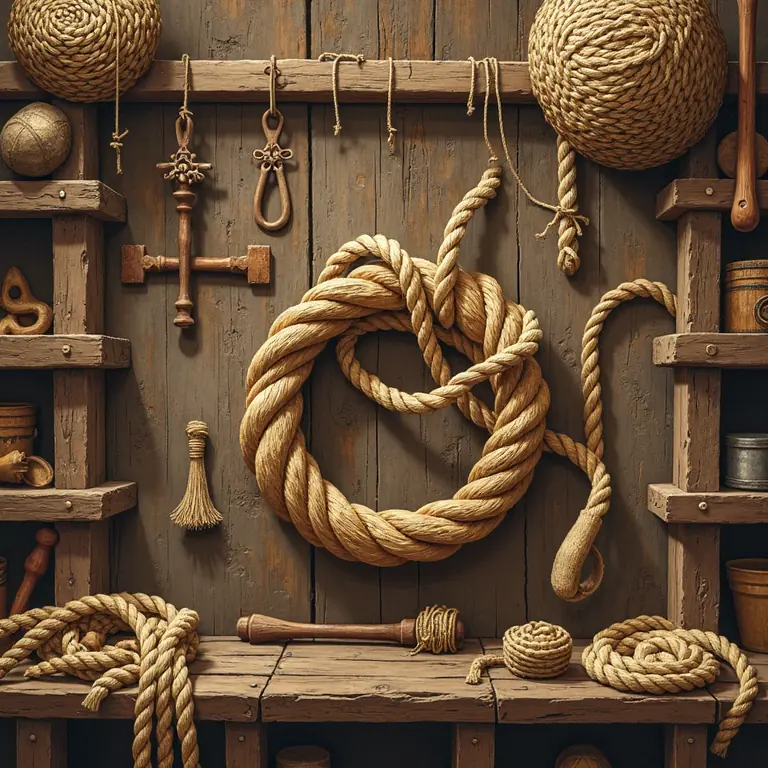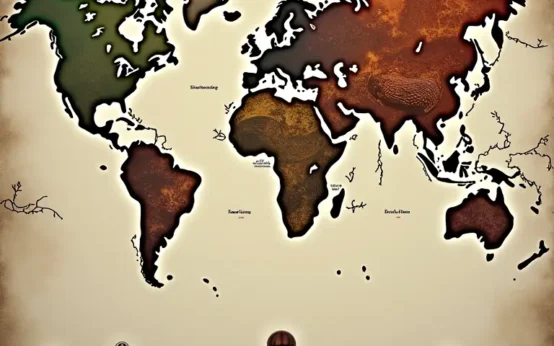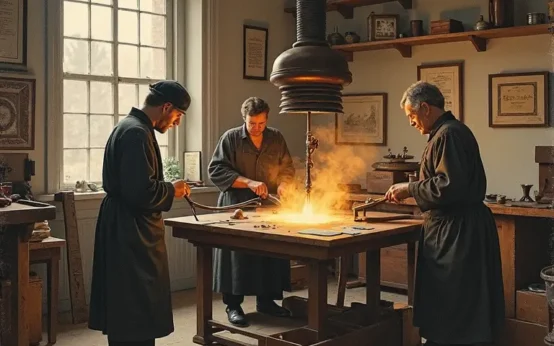From the earliest hunter-gatherers to the complex societies of antiquity, the humble knot has been an indispensable tool, a silent partner in the development of civilization. Often overlooked, cordage – and the ability to create and utilize knots – wasn’t merely a practical skill; it was a foundational technology that enabled innovation in everything from hunting and building to communication and record-keeping. This article will explore the fascinating history of knots, their evolution, and the profound impact they had on shaping the world we know.
The Prehistory of Cordage: Before Written Records
The origins of knot-tying are lost in the mists of prehistory, predating even the earliest forms of writing. It’s impossible to pinpoint exactly when humans first began to manipulate fibers, but archaeological evidence suggests it was incredibly early. The need for binding materials likely arose with the development of tools. Attaching a stone head to a wooden shaft to create an axe, for instance, required some form of cordage.
Early materials were dictated by environment. Natural fibers like grasses, vines, animal sinew, and plant stalks were readily available and formed the basis of the first ropes and cords. Evidence from Neanderthal sites suggests they possessed the knowledge of processing plant fibers for twine, indicating a cognitive ability to understand and manipulate these materials. The Laetoli footprints in Tanzania, dating back 3.6 million years, while famous for preserving hominid footprints, also contain evidence of early tool use which likely involved cordage.
The very act of making cordage – twisting and braiding fibers together – required a degree of planning and manual dexterity, showcasing early cognitive development. The earliest ‘knots’ weren’t necessarily complex; they were likely simple overhand knots used for securing objects or creating basic loops. However, these simple beginnings laid the groundwork for more sophisticated techniques.
Knots and the Neolithic Revolution
The Neolithic Revolution, the shift from nomadic hunter-gatherer lifestyles to settled agricultural communities, saw a dramatic increase in the importance of cordage and knot-tying. Agriculture demanded new tools and techniques, and many of these relied heavily on ropes and knots.
Building permanent structures, such as houses and granaries, required ropes for lifting and securing materials. The construction of fences to protect crops and livestock also necessitated cordage. Agricultural tools themselves, like plows and harvesting implements, often incorporated rope components. Irrigation systems, crucial for successful farming in arid regions, frequently involved woven baskets and channels lined with fibers and secured with knots.
The development of weaving and basketry, closely linked to knot-tying, allowed for the creation of containers for storing grain, seeds, and other agricultural products. These weren’t just practical advancements; they represented a shift in thinking – the ability to *create* something useful from raw materials, rather than simply finding what nature provided.
Knots in Ancient Civilizations: Egypt, Mesopotamia, and Beyond
As civilizations arose in Egypt, Mesopotamia, and the Indus Valley, the use of knots became increasingly refined and specialized. Each civilization developed unique knotting techniques suited to their specific needs and resources.
Ancient Egypt: Egyptians utilized a variety of knots in shipbuilding, construction, and daily life. Ropes were essential for maneuvering massive stone blocks during the construction of the pyramids. Complex knots were used in fishing nets and for securing cargo on the Nile River. Interestingly, Egyptians also employed knots in jewelry and decorative items, demonstrating an aesthetic appreciation for the art of knotting. The linen used for clothing and sails was also heavily reliant on knotting techniques for weaving and securing.

Mesopotamia: In Mesopotamia, knots played a crucial role in irrigation systems, particularly in the construction of qanats – underground channels used to transport water over long distances. Ropes were also essential for hoisting water from wells and for building mud-brick structures. The Code of Hammurabi, one of the earliest known legal codes, mentions ropes and their use in trade and contracts, indicating their economic importance.
The Indus Valley Civilization: Archaeological evidence from Mohenjo-daro and Harappa reveals the use of ropes and knots in construction, pottery making, and textile production. The standardized weights and measures used throughout the Indus Valley suggest a level of organization and precision that likely extended to the crafting of cordage.
The Inca Empire: Perhaps the most famous example of knot-based record-keeping comes from the Inca Empire. The quipu, a complex system of knotted cords, served as a form of writing and accounting. Different knot types, colors, and positions represented numerical values and categories of information, allowing the Inca to track census data, tax records, and even historical narratives. The decipherment of the quipu remains an ongoing area of research, but it’s clear that it was a highly sophisticated system of information management. Like the evolution of written language, the quipu demonstrates a human drive to record and transmit knowledge.
Knots at Sea: The Age of Exploration
The development of seafaring was inextricably linked to the mastery of knots. From the earliest reed boats to the majestic sailing vessels of the Age of Exploration, ropes and knots were essential for controlling sails, securing cargo, anchoring ships, and performing countless other tasks.
Different knots were developed for specific purposes. The bowline, known as the “king of knots,” creates a secure loop that doesn’t slip under load, making it ideal for mooring and rescue operations. The clove hitch is a versatile knot used for attaching ropes to posts or rings. The sheet bend is used for joining two ropes together. Seafarers developed a vast repertoire of knots, each with its own strengths and weaknesses.
The ability to tie and understand these knots was a critical skill for sailors, and maritime cultures developed a rich vocabulary and lore surrounding them. Nautical terminology is still filled with knot-related terms, such as “fathom” (a unit of length based on the arm span used for measuring rope) and “belaying” (securing a rope to a cleat).
Knots and Warfare: From Siege Engines to Naval Tactics
Throughout history, knots have played a significant role in warfare. Siege engines, used to breach fortifications, relied heavily on ropes and pulleys to generate the necessary force. Ropes were used to construct siege towers, operate catapults, and transport heavy equipment.
In naval warfare, knots were crucial for controlling sails, maneuvering ships, and boarding enemy vessels. Rope ladders were used for scaling ship sides, and ropes were used to secure prisoners and loot. Naval tactics often involved cutting enemy rigging with sharp blades, disabling their ability to maneuver. The development of more sophisticated knots allowed for more effective rigging and ship control, giving naval powers a strategic advantage.

Beyond Practicality: Knots in Ritual and Symbolism
The significance of knots extends beyond their practical applications. In many cultures, knots have been imbued with symbolic meaning and used in religious rituals and ceremonies.
Celtic Knots: Celtic knotwork, characterized by intricate interwoven patterns, is a prominent feature of Celtic art and design. These knots often symbolize eternity, interconnectedness, and the cyclical nature of life. They were used to decorate manuscripts, sculptures, and jewelry.
Shinto Knots: In Shinto, the indigenous religion of Japan, knots are used to demarcate sacred spaces and to ward off evil spirits. The shimenawa, a rope made of straw, is often hung across the entrances of Shinto shrines, symbolizing purity and separation from the mundane world.
Buddhist Knots: In Buddhism, the endless knot, also known as the “eternal knot,” represents the interconnectedness of all things and the cyclical nature of existence. It is a common motif in Buddhist art and iconography.
The Modern Revival of Knot-Tying
While the advent of modern materials like metal and plastic has diminished the reliance on rope in some areas, the art of knot-tying continues to thrive. There’s a growing interest in traditional crafts and a renewed appreciation for the skills of past generations.
Macramé, a form of knotting used to create decorative items like wall hangings and plant hangers, has experienced a resurgence in popularity. Rock climbing, sailing, and other outdoor activities require a thorough understanding of knots for safety and efficiency. Survival skills training often includes knot-tying as an essential component. Just as board games have evolved, so too have knotting techniques.
Furthermore, the study of knots has applications in fields like mathematics and physics. Knot theory, a branch of topology, explores the mathematical properties of knots and their applications in various scientific disciplines.
The Legacy of Cordage
The story of knots is the story of human ingenuity and adaptation. From the earliest hunter-gatherers to the complex societies of today, the ability to manipulate fibers and tie knots has been a fundamental skill that has shaped our world. It facilitated the development of agriculture, construction, transportation, and countless other aspects of civilization.
The next time you encounter a rope, a knot, or a woven fabric, take a moment to appreciate the rich history and enduring legacy of this humble yet powerful technology. It’s a reminder that even the simplest tools can have a profound impact on the course of human history. Like the intricate mechanisms of early automata, the seemingly simple knot reveals a complexity and elegance born of necessity and innovation.
The ongoing exploration of ancient technologies, including cordage, provides valuable insights into the lives and capabilities of our ancestors. Just as we trace the origins of medicine to ancient botanical knowledge, we can trace the roots of our modern world back to the art of knots.
And as we face new challenges in the 21st century, the principles of resourcefulness and innovation that drove the development of cordage remain as relevant as ever. Similar to the unexpected roles of animals in early timekeeping, the humble knot continues to surprise us with its versatility and historical significance.


 The Curious Acoustics of Historical Echo Chambers: Resonance, Ritual, and Revelation
The Curious Acoustics of Historical Echo Chambers: Resonance, Ritual, and Revelation  The Curious Cartography of Scent: Mapping Perfume Ingredients Through History
The Curious Cartography of Scent: Mapping Perfume Ingredients Through History  The Curious Lexicon of Lost Trades
The Curious Lexicon of Lost Trades  The Surprisingly Consistent Science of Historical Ice Harvesting – A Frozen History of Commerce & Preservation
The Surprisingly Consistent Science of Historical Ice Harvesting – A Frozen History of Commerce & Preservation  The Unexpectedly Consistent Science of Historical Buttonhooks – Fashion, Function & Forgotten Tools
The Unexpectedly Consistent Science of Historical Buttonhooks – Fashion, Function & Forgotten Tools  The Surprisingly Consistent Science of Historical Toy Soldiers – Miniature Warfare, Materials & Collective Play
The Surprisingly Consistent Science of Historical Toy Soldiers – Miniature Warfare, Materials & Collective Play